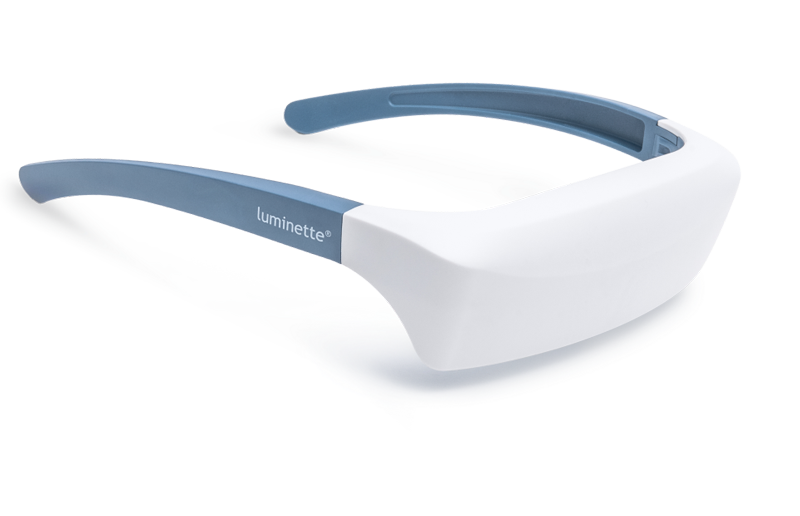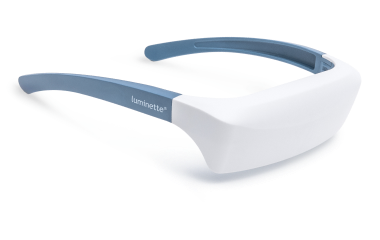Kronobiologia mahdollistaa kehon käyttäytymisen tutkimisen. Vuoteen 2002 asti pystyimme erottamaan vain kaksi tyyppiä silmän valoaistinsoluja—tikkasoluja (vastuussa näöstä yöllä) ja sauvasoluja (vastuussa näöstä päivällä). Vuonna 2002 tutkijat tekivät löydön, joka mahdollisti valohoidon käytännön laajentamisen: itse asiassa on olemassa kolmas tyyppi valoaistinsoluja, tällä kertaa ei-visuaalinen. Näitä kutsutaan myös gangliopigmenttisoluiksi, ja ne osallistuvat vuorokausirytmien säätelyyn valon vaikutuksen kautta.
Valo on paljon enemmän kuin pelkkä väline, johon luotamme nähdäksemme ympäröivän maailman. Se näyttelee ratkaisevaa roolia lukemattomissa biologisissa prosesseissa, jotka ohjaavat hyvinvointiamme. Unen ja valveen sykliemme säätelystä mielialan ja energiatasojen vaikuttamiseen valo vuorovaikuttaa kehomme kanssa syvällisillä tavoilla. Tämä blogikirjoitus tutkii valon monipuolista roolia kehossa, tarjoten näkemyksiä ja esimerkkejä terveyden harrastajille, hyvinvoinnin etsijöille ja lääketieteen ammattilaisille.
Valon vaikutusmekanismi koostuu eri vaiheista
Valon läpäisy: Valo pääsee silmään ja aktivoi verkkokalvon erikoistuneet gangliosolut, jotka sisältävät pigmenttiä. Nämä solut ovat herkkiä valon intensiteetin muutoksille ja ovat ratkaisevia kehomme valovasteen säätelyssä.
Signaalin muuntaminen: Silmän valoa aistivat solut, sauvat ja tapit, muuttavat saapuvan visuaalisen signaalin sähköiseksi signaaliksi. Tämä prosessi on välttämätön valotiedon välittämiseksi aivoihin. Sähköinen signaali kulkee sitten näköhermon kautta, joka toimii viestintäreittinä, biologisen kellomme säätelijälle, suprachiasmaattiselle tumakkeelle (SCN).
Signaalin tulkinta ja hormonaalinen säätely: Hypotalamuksessa sijaitseva suprachiasmaattinen tumake tulkitsee sähköisen signaalin. Tämä pieni mutta voimakas aivojen osa on ratkaisevassa roolissa päivittäisten rytmiemme ylläpidossa. Se kommunikoi käpyrauhasen kanssa säädelläkseen hormonituotantoa. Tämän seurauksena rauhanen säätää unihormoni melatoniinin ja hereillä olevien hormonien, kuten kortisolin, serotoniinin ja adrenaliinin, eritystasoa. Nämä hormonit auttavat synkronoimaan uni-valverytmiämme ulkoisen ympäristön kanssa, edistäen kokonaisvaltaista terveyttä ja hyvinvointia.
Valon biologiset vaikutukset kehoon
Kehomme on kehittynyt olemaan synkronissa luonnollisten valo- ja pimeysrytmiensä kanssa. 24 tunnin sykli, joka tunnetaan nimellä vuorokausirytmi, säätelee monia fysiologisia prosesseja, kuten hormonien vapautumista, aineenvaihduntaa ja solujen uusiutumista. Valo on ensisijainen vihje, joka asettaa sisäiset kellomme tähän sykliin. Kun altistumme päivän aikana luonnonvalolle, se viestii kehollemme olla hereillä ja aktiivinen. Auringon laskiessa himmeämpi keinovalo tai pimeys käynnistää melatoniinin tuotannon, valmistaen meidät uneen.
Kuinka valo vaikuttaa vuorokausirytmiin
Vuorokausirytmi on kehomme luonnollinen kello, joka säätelee fysiologisia prosesseja 24 tunnin syklissä. Valonaltistus on keskeinen vihje, joka auttaa säätämään tätä sisäistä kelloa. Kun valo pääsee silmiimme, se viestii aivoille kehon toimintojen mukauttamisesta. Aamun valo käynnistää serotoniinin tuotannon, mikä parantaa mielialaa ja keskittymistä, kun taas illan pimeys laukaisee melatoniinin tuotannon, valmistaen meidät uneen.
Eri valotyypit vaikuttavat vuorokausirytmiimme eri tavoin. Luonnonvalo sovittaa sisäisen kellomme päivä-yö-rytmiin, edistäen kehon toimintojen synkronointia. Vastaavasti liiallinen altistuminen keinotekoiselle valolle, erityisesti siniselle valolle näytöiltä, voi häiritä tätä rytmiä, aiheuttaen unihäiriöitä ja niihin liittyviä terveysongelmia. Ymmärtäminen siitä, miten valonaltistus vaikuttaa vuorokausirytmiin, on avain optimaalisen terveyden ja hyvinvoinnin ylläpitämiseen.
Valon rooli unen ja valveen syklisten rytmien säätelyssä
Unen ja valveen sykliä säätelee voimakkaasti valonaltistus. Päivällä kirkkaalle valolle altistuminen auttaa pitämään meidät valppaina ja hereillä. Yöllä valon puute viestii keholle rauhoittumisen ja unen valmistelun. Tämä luonnollinen prosessi toimii parhaiten, kun noudatamme säännöllistä aikataulua, mikä mahdollistaa sujuvan siirtymän nukkumisen ja valveillaolon välillä.
Valonaltistuksen häiriöt, kuten vuorotyö tai epäsäännölliset uniaikataulut, voivat johtaa univaiheiden häiriöihin. Ajan myötä nämä häiriöt voivat aiheuttaa unihäiriöitä, kuten unettomuutta, mikä vaikeuttaa levollisen unen saavuttamista. Terveiden valotottumusten, kuten luonnonvalolle altistumisen päivän aikana ja ruutuaikojen minimoinnin ennen nukkumaanmenoa, sisällyttäminen voi auttaa säätelemään näitä rytmejä ja parantamaan unen laatua.
Valon vaikutus hormonituotantoon (melatoniini ja kortisoli)
Valolla on merkittävä rooli hormonien säätelyssä, erityisesti melatoniinin ja kortisolin osalta. Melatoniini, joka tunnetaan "unihormonina", erittyy pimeyden vaikutuksesta, edistäen rauhallisuuden tunnetta ja valmiutta nukkua. Vastaavasti kortisoli, "stressihormoni", on herkkä aamuiselle valonaltistukselle, mikä lisää valppautta ja energiaa.
Näiden hormonien tasapaino on ratkaisevan tärkeä terveiden fysiologisten prosessien ylläpitämiseksi. Riittävä valonaltistus päivän aikana tukee kortisolin tuotantoa, parantaen päivävireyttä, kun taas hämärä valaistus illalla edistää melatoniinin vapautumista, mikä tukee levollista unta. Tämän hormonaalisen tasapainon ylläpitäminen on olennaista kokonaisvaltaiselle hyvinvoinnille ja se voidaan saavuttaa sovittamalla valonaltistus luonnollisiin päivä-yö-rytmeihin.
Valon vaikutus mielenterveyteen ja emotionaaliseen hyvinvointiin
Valon vaikutus fysiologisten prosessien säätelyn lisäksi on merkittävä myös mielenterveyteemme ja emotionaaliseen hyvinvointiimme. Altistuminen luonnonvalolle laukaisee serotoniinin vapautumisen, mikä parantaa mielialaa ja energiatasoja. Vastaavasti rajoittunut altistuminen luonnonvalolle tai liiallinen altistuminen keinotekoiselle valolle voi edistää matalaa mielialaa ja muita häiriöitä.
Yhteys valoaltistuksen ja mielialan välillä
Valoaltistuksella on syvällinen vaikutus mielialaamme ja emotionaaliseen hyvinvointiimme. Auringonvalon läsnäolo stimuloi serotoniinin tuotantoa, joka on välittäjäaine, johon liittyy onnellisuuden ja positiivisuuden tunteita. Siksi säännöllinen luonnonvalolle altistuminen voi parantaa mielialaa, lisätä energiatasoja ja vahvistaa yleistä emotionaalista terveyttä.
Toisaalta rajoittunut päivänvalon saanti voi johtaa mielialan vaihteluihin ja jopa vaikuttaa mielenterveyden häiriöihin. Kausivaihteluihin liittyvät mielialan vaihtelut, eräs häiriötyyppi, joka ilmenee pimeämpinä kuukausina, johtuvat suoraan vähentyneestä auringonvalon saannista. Luonnonvalon lisääminen päivittäiseen elämäämme, olipa se sitten ulkoilun kautta tai yksinkertaisesti viettämällä aikaa hyvin valaistuissa tiloissa, voi merkittävästi parantaa mielialaa ja emotionaalista hyvinvointia.
Valon rooli mielialan vaihteluiden ja ahdistuksen hallinnassa
Valoaltistus vaikuttaa kausivaihteluiden lisäksi myös yleisten mielialahäiriöiden ja ahdistuksen hallintaan. Tutkimukset ovat osoittaneet, että enemmän luonnonvalolle altistuvat henkilöt kokevat vähemmän mielialan vaihteluiden ja ahdistuksen oireita. Tämä yhteys johtuu valon vaikutuksesta välittäjäaineiden säätelyyn, erityisesti serotoniinin ja dopamiinin osalta.
Valoaltistuksen lisäämiseen tähtäävien strategioiden, kuten ulkoilun, valohoidon hyödyntämisen tai kirkkaiden sisätilojen luomisen, sisällyttäminen voi toimia täydentävinä lähestymistapoina perinteisille masennuksen ja ahdistuksen hoidoille. Nämä toimet voivat auttaa parantamaan mielialan vakautta ja tarjota ei-invasiivisen tavan tukea mielenterveyttä.
Luminette 3 valohoitolasit ovat innovatiiviset silmälasit, jotka on suunniteltu mahdollistamaan valohoitosession nauttiminen samalla, kun teet tavallisia aktiviteettejasi. Toisin kuin perinteiset hoitolamput, Luminette 3 -lasit sisältävät keinotekoisen valonlähteen, joka suuntaa turvallisen valonsäteen silmiisi ilman häikäisyä tai näkösi estämistä.
Käyttääksesi niitä, riittää, että käytät silmälaseja ja painat nappia aktivoidaksesi valon, jolloin valohoitosessiosi alkaa. Nämä lasit ovat käyttäjäystävälliset ja yhteensopivat silmälasien tai piilolinssien käyttäjien kanssa, varmistaen, ettei näkö tai mukavuus häiriinny.
Luminette 3:n mukavuuden ansiosta sinun ei enää tarvitse istua paikallaan olevan valohoitolampun vieressä 30 minuuttia päivässä. Vapaus liikkua tarkoittaa, että voit valmistaa aamiaista, uppoutua mukaansatempaavaan kirjaan, katsoa suosikkisarjojasi, tehdä tietokoneella töitä tai jopa tehdä kevyitä harjoituksia samalla, kun saat terapeuttista valoaltistusta. Olitpa kotona tai liikkeellä, Luminette 3 tarjoaa joustavan ja tehokkaan ratkaisun valohoidon sisällyttämiseen päivittäiseen elämääsi.
Valon vaikutus fyysiseen terveyteen
Valon vaikutus fyysiseen terveyteemme ulottuu unen ja mielialan säätelyn ulkopuolelle. Tutkimukset ovat osoittaneet, että luonnonvalolle altistumisella on lukuisia hyötyjä fyysiselle hyvinvoinnillemme, D-vitamiinitasojen nostamisesta immuunitoiminnan tukemiseen.
Kuinka valo vaikuttaa D-vitamiinin synteesiin
Yksi valon tunnetuimmista rooleista fyysisessä terveydessä on sen osallistuminen D-vitamiinin synteesiin. Kun iho altistuu auringon ultravioletti B (UVB) -säteille, se käynnistää D-vitamiinin tuotannon, joka on tärkeä ravintoaine luuston terveydelle, immuunitoiminnalle ja yleiselle elinvoimalle.
D-vitamiinin puutos on yhdistetty erilaisiin terveysongelmiin, kuten heikentyneisiin luihin, heikentyneeseen immuunijärjestelmään ja lisääntyneeseen kroonisten sairauksien riskiin. Riittävän auringonvalon saannin varmistaminen, samalla välttäen liiallista altistumista, on avain optimaalisten D-vitamiinitasojen tukemiseen. Alueilla, joilla auringonvaloa on vähän, D-vitamiinilisät voivat olla tarpeen riittävien tasojen ylläpitämiseksi ja yleisen terveyden tukemiseksi.
Valon altistus ja silmien terveys
Valon altistuksella on myös vaikutuksia silmien terveyteen. Vaikka luonnonvalo on välttämätöntä näöntarkkuuden ja silmien yleisen toiminnan ylläpitämiseksi, liiallinen altistuminen, erityisesti keinotekäisille valonlähteille, voi johtaa silmien rasitukseen ja digitaaliseen silmäväsymykseen. Pitkäaikainen näytön käyttö ilman riittäviä taukoja voi aiheuttaa epämukavuutta ja näköön liittyviä ongelmia.
Silmien terveyden suojelemiseksi on tärkeää noudattaa hyvää visuaalista hygieniaa. Tämä sisältää säännölliset tauot näyttöjen käytöstä, sinisen valon suodattimien käytön ja riittävän valaistuksen varmistamisen ympäristössämme. Lisäksi ulkona vietetty aika ja silmien sopeuttaminen luonnonvaloon voivat edistää silmien terveyttä ja vähentää näköön liittyvien ongelmien riskiä.
Valon vaikutus energiatasoihin ja väsymykseen
Valon altistuksella on merkittävä vaikutus energiatasoihimme ja alttiuteemme väsymykselle. Luonnonvalolle altistuminen päivän aikana auttaa lisäämään valppautta ja kognitiivista suorituskykyä, kun taas valon puute voi johtaa väsymykseen ja heikentyneeseen tuottavuuteen. Tämä on erityisen tärkeää toimistoympäristöissä, joissa keinotekoinen valaistus ei välttämättä tarjoa samaa energisoivaa vaikutusta kuin luonnonvalo.
Valon altistuksen optimointi päivän aikana voi parantaa energiatasoja ja torjua väsymystä. Yksinkertaiset strategiat, kuten taukojen pitäminen ulkona, työskentely ikkunoiden lähellä tai valoterapia-laitteiden käyttö, voivat tehdä merkittävän eron korkean energiatasojen ylläpitämisessä ja keskipäivän väsymyksen vähentämisessä. Luonnonvalon altistuksen priorisointi on yksinkertainen mutta tehokas tapa lisätä elinvoimaa ja yleistä hyvinvointia.
Light Therapy Lamp Drive on innovatiivinen valohoitolamppu kiireisille ihmisille, joka mahdollistaa valoterapiaistunnon kätevän suorittamisen tien päällä. Tämä laite on nerokkaasti suunniteltu kiinnittymään saumattomasti ajoneuvosi aurinkolippaan. Yksinkertaisella kytkimen kääntämisellä se tarjoaa tehokkaan valohoitoistunnon ajaessasi määränpäähäsi.
Niille, jotka viettävät vähintään 20 minuuttia päivässä ratin takana, Drive on täydellinen kumppani, tarjoten ainutlaatuisen ratkaisun hyvinvoinnin integroimiseksi päivittäiseen rutiiniin. Tämä on erityisen hyödyllistä henkilöille, jotka tekevät pitkiä yöajoja, sillä se auttaa torjumaan pimeyden ja väsymyksen vaikutuksia.
Drive lähettää turvallista, kirkasta valoa silmiisi, huolellisesti suunniteltu parantamaan valppauttasi häiritsemättä ajamista. Näin se tarjoaa valohoidon koko spektrin hyödyt, mukaan lukien melatoniinin, unta edistävän hormonin, tuotannon säätelyn, edistäen valveillaoloa ja lisääntynyttä valppautta. Tämä tekee siitä paitsi toimivan työkalun myös arvokkaan liittolaisen kokonaisvaltaisen hyvinvointisi ja henkisen terävyytesi ylläpitämisessä matkoillasi.
Valohoidon hyödyt
Valohoidolla on lukuisia hyötyjä mielialahäiriöiden hoidon lisäksi, mikä tekee siitä monipuolisen työkalun terveyden ja hyvinvoinnin parantamiseen. Alun perin kehitetty kausivaihteluihin liittyvien mielialojen hoitoon, sen käyttötarkoitukset ovat vuosien varrella laajentuneet.
Tutkimukset korostavat, että valohoito voi parantaa unen laatua säätelemällä unta, erityisesti unettomuudesta tai epäsäännöllisistä aikatauluista kärsivillä. Se on erityisen tehokas jet lagin ja vuorotyöhön liittyvien unihäiriöiden hoidossa. Altistamalla ihmiset hallituille annoksille kirkasta valoa, valohoito auttaa nollaamaan kehon sisäisen kellon, edistäen parempaa unihygieniaa ja sovittamalla uni-valverytmin luonnollisiin vuorokausirytmeihin. Tämä sovitus lisää energiatasoja ja yleistä terveyttä.
Valohoito on myös hyödyllistä kognitiiviselle suorituskyvylle. Tutkimukset viittaavat siihen, että kirkkaalle valolle altistuminen päivän aikana parantaa keskittymistä, tarkkaavaisuutta ja muistia. Nämä kognitiiviset hyödyt ovat erityisen arvokkaita vaativissa työympäristöissä työskenteleville tai niille, jotka pyrkivät optimoimaan henkisiä kykyjään. Parantunut tuottavuus ja ongelmanratkaisutaidot tekevät valohoidosta houkuttelevan henkilökohtaiseen ja ammatilliseen kasvuun.
Lisäksi käynnissä oleva tutkimus tutkii valohoidon potentiaalia mielialan vakauden tukemisessa ja kroonista väsymysoireyhtymää sairastavien auttamisessa. Kun jatkamme sen vaikutusten paljastamista, valohoidosta on tulossa keskeinen osa kokonaisvaltaisia terveydenhuoltostrategioita.
Discover what role light plays on the body
with Roland Pec - sleep specialist and chrono-therapist

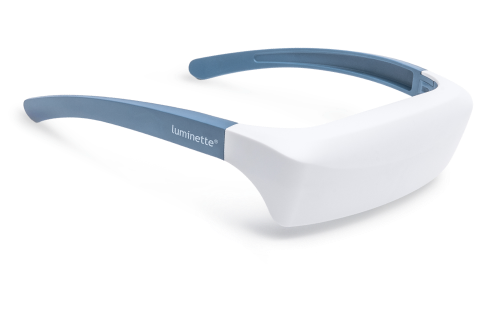


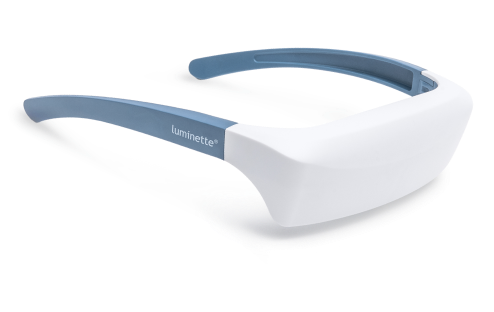





















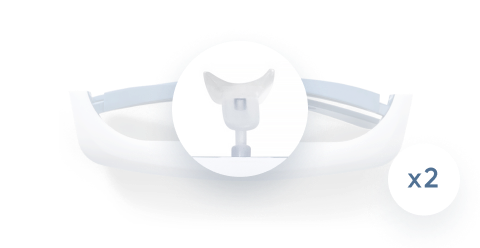
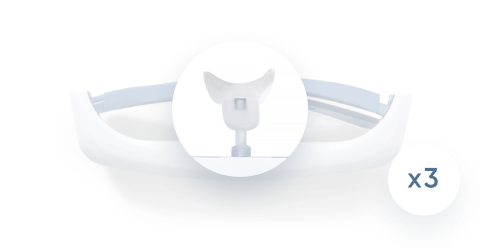
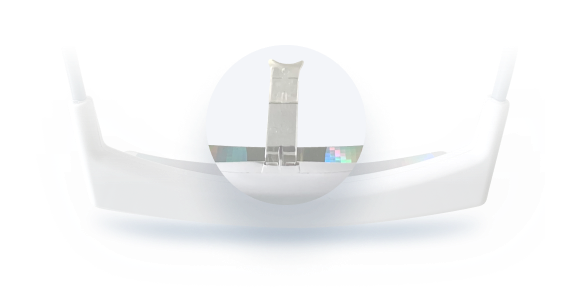




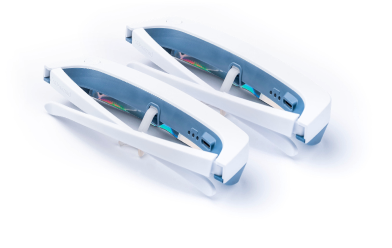
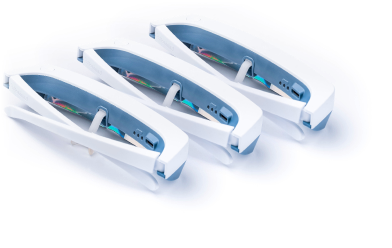





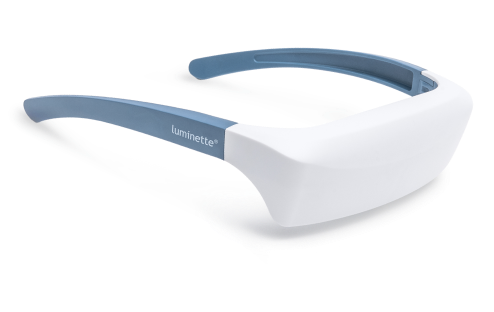
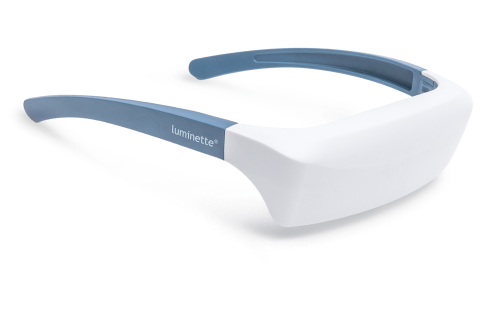
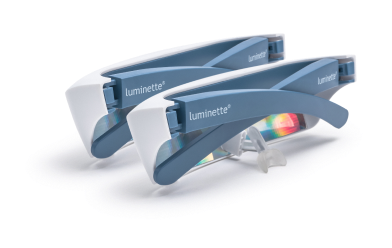








 Please note
Please note




